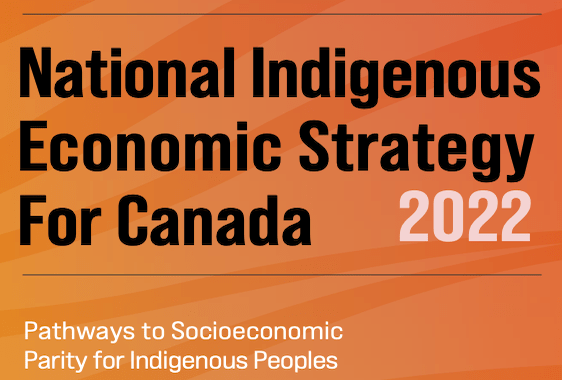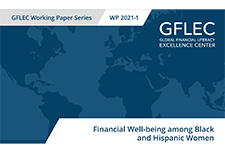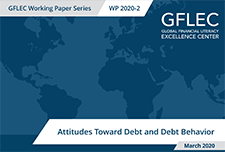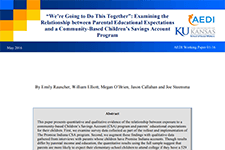Discover financial empowerment resources
Discover financial empowerment resources
This National Indigenous Economic Strategy for Canada is the blueprint to achieve the meaningful engagement and inclusion of Indigenous Peoples in the Canadian economy. It has been initiated and developed by a coalition of national Indigenous organizations and experts in the field of economic...

This study covers the rapidly growing literature on the causal effects of financial education programs in a meta-analysis of 76 randomized experiments with a total sample size of over 160,000 individuals. The evidence shows that financial education programs have, on average, positive causal...

This paper provides an in-depth examination of the financial well-being of Black and Hispanic women and the factors contributing to it, using the 2018 wave of the National Financial Capability Study. Differences between Black and Hispanic women versus White women are documented, in that the former...

Women are less financially literate than men. It is unclear whether this gap reflects a lack of knowledge or, rather, a lack of confidence. This survey experiment shows that women tend to disproportionately respond “do not know” to questions measuring financial knowledge, but when this response...

This paper introduces a novel survey measure of attitude toward debt. Survey results with panel data on Swedish household balance sheets from registry data are matched, showing that debt attitude measure helps explain individual variation in indebtedness as well as debt build-up and spending...

This paper has been commissioned by Prosper Canada to develop and present a working model of the relationships between financial empowerment and poverty in Canada. It reviews published, international, English-language, academic and grey literature, as well as documents provided by Prosper...
In recent years, many states and some local governments implemented or expanded their own, supplemental Earned Income Tax Credit (EITCs). The expansion of state EITCs may have stemmed in large part from wanting to provide a more generous program than the federal program, because state EITCs...
This study analyzes the effect of individual finances (specifically creditworthiness and severely delinquent debt) on mortality risk. A large (approximately 170,000 individuals) subsample of a quarterly panel data set of individual credit reports is utilized in an instrumental variables design....
This overview paper broadly outlines the types of strategies being used to help people move up from poverty. It lays out basic categories for classifying such programs, explains the logic of various approaches, and offers some broad pros and cons of various types of interventions. The accompanying...
This working paper compares three commonly used measures of low income used in Canadian poverty analysis. It is the fourth in a series of working papers intended to promote a discussion by participants in our Sounding Board and others. Thresholds and incidences of low-income for the Low Income...
More than ever, Americans need to be financially savvy. The past few years have shown that mortgages can be complicated, business-cycle downswings severe, and investing far from obvious. And, for many of us, saving is not easy. Creating a successful financial life takes a high level of know-how and...
The Government of Canada is committed to strengthening the middle class and helping low-income Canadians exit poverty so that they have sufficient capabilities to be well and do well. To achieve this goal, we will need to form partnerships, modernize the existing landscape of supports and encourage...
Financial literacy programs are fast becoming a key ingredient in financial policy reform worldwide. Yet, what is financial literacy exactly and what do we know of its effectiveness? This paper collects insights from the literature thus far and summarizes global evidence, on financial literacy, its...
Financial vulnerability is not limited to the world’s poorest people or nations. Despite the United States’ relative wealth, many Americans are financially insecure, lacking either the ability to meet monthly bills or the necessary savings to cover unexpected expenses. Helping fragile consumers...
No explicit theory or framework consistently describes the goals of social policy or how social policies actually work. By a framework, we mean a consistent way of describing individuals in their relationship to society and its institutions, including how policies affect those relationships, and...
This paper examines households’ financial fragility by looking at their capacity to come up with $2,000 in 30 days. Using data from the 2009 TNS Global Economic Crisis survey, the respondents who report being certain or probably not able to cope with an ordinary financial shock of this size...
Social entrepreneurs are successfully mobilizing both the human and financial capital required to start and scale their social ventures. At MaRS Discovery District (MaRS), we see tremendous momentum building around these new opportunities. However, unless there is a clear understanding by funders...
The authors developed and experimentally evaluated four novel educational programs delivered online: an informational brochure, a visual interactive tool, a written narrative, and a video narrative. The programs were designed to inform people about risk diversification an essential concept for...
Simply doing away with payday loans will help some, but it will also hurt others. To truly improve the small dollar credit market, increased access to well-structured and more affordable small dollar credit (what this paper refers to as enabling small-dollar credit) is vital. Building an enabling...
This paper presents quantitative and qualitative evidence of the relationship between exposure to a community-based Children’s Savings Account (CSA) program and parents’ educational expectations for their children. First, we examine survey data collected as part of the rollout and...

There is concern that the increasing number of alternative financial services in communities across the US is risking individuals' financial health by increasing their use of these highcost services. To address this concern, this study used restricted-access, zip code data from nationally...
